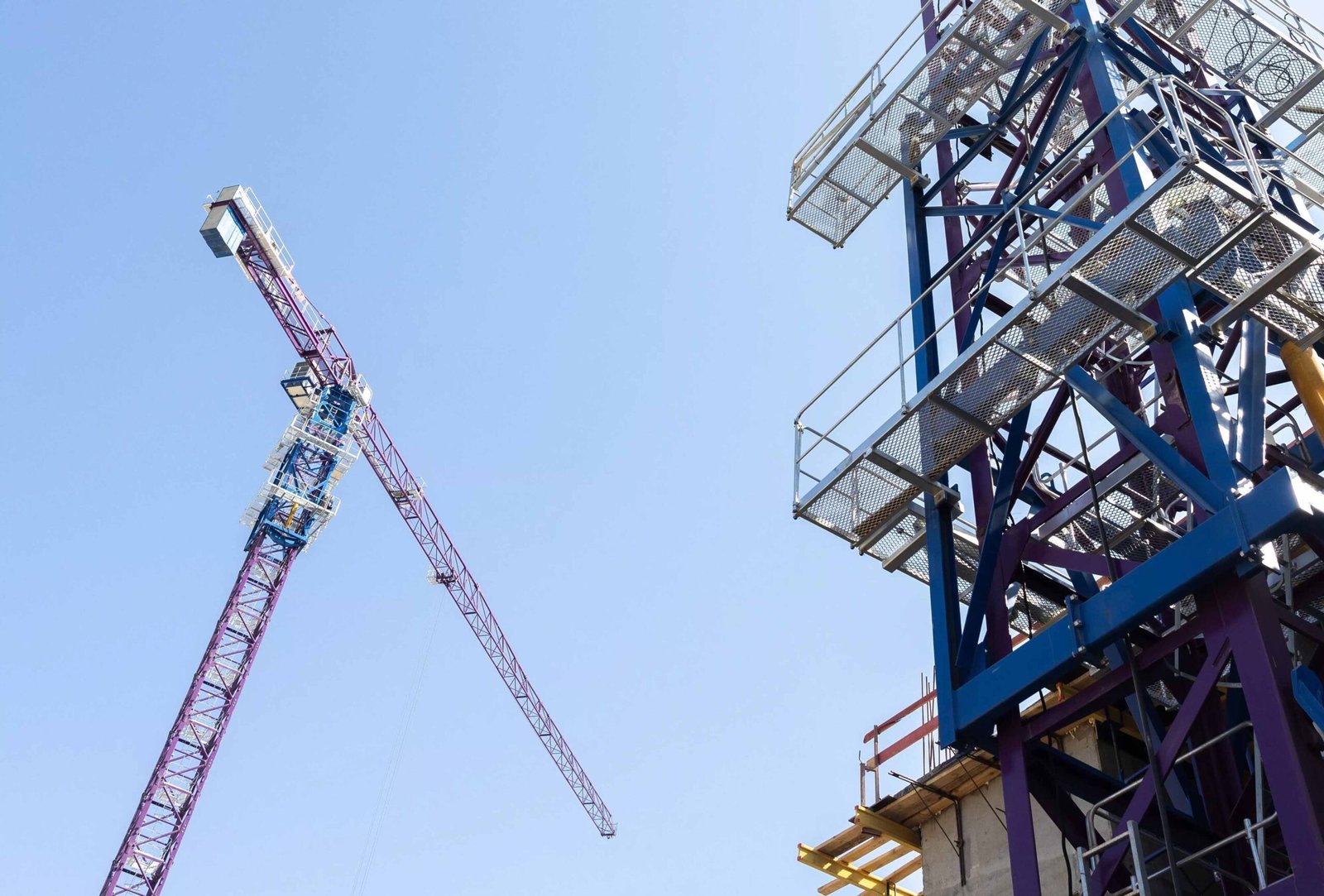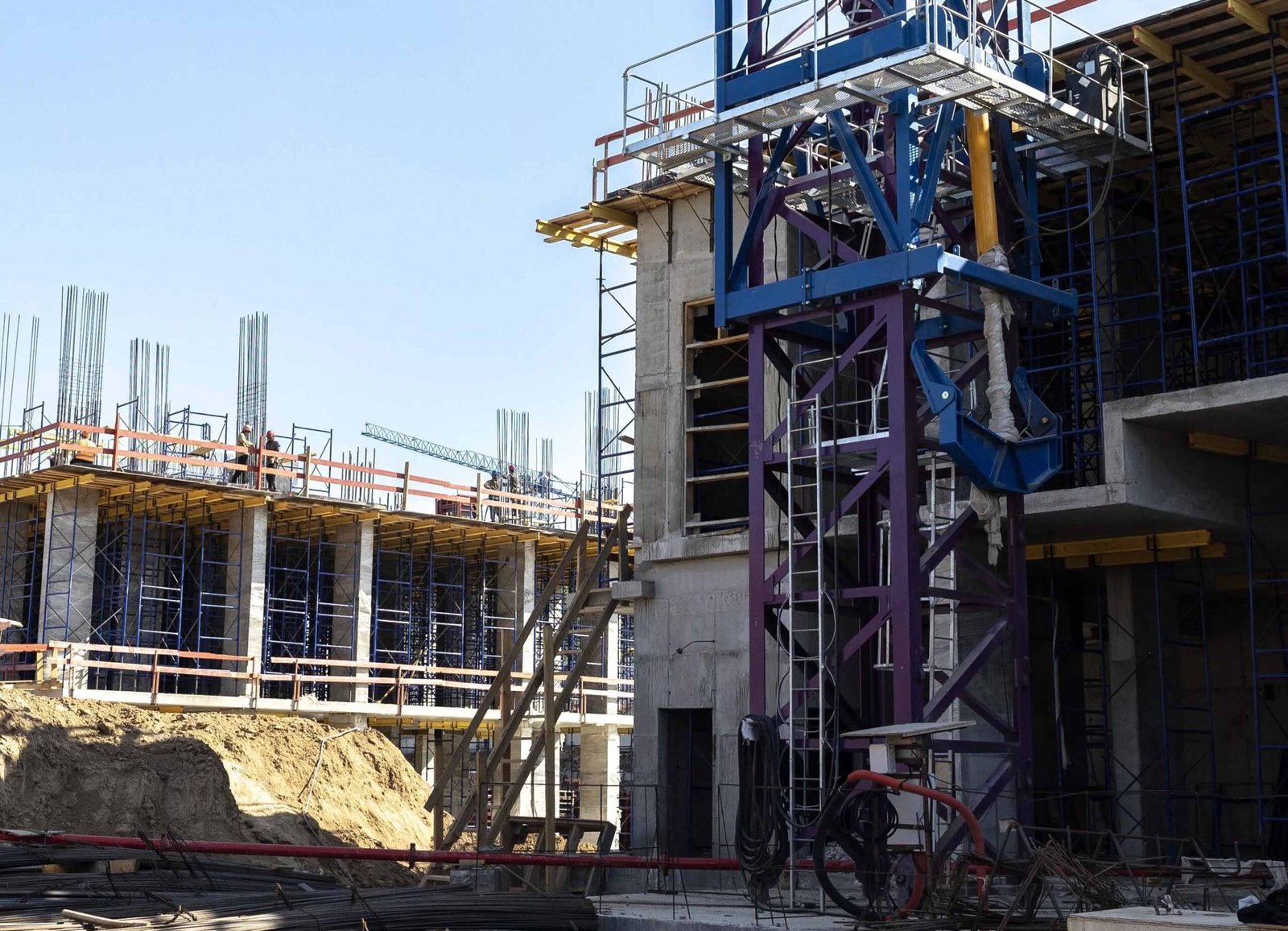
Construction cranes are essential tools in modern construction, helping to lift and move heavy materials on building sites. These machines work through a combination of mechanical systems, including pulleys, motors, and levers, that make them capable of lifting massive loads. In this article, we will explore how cranes work, from basic operation to their ability to lift heavy weights.
Cranes are essential machines in construction, lifting heavy loads using mechanical systems like pulleys and motors.
Cranes are a key part of construction projects, capable of lifting and moving massive objects with precision. Understanding how they work not only helps with better operations but also with ensuring safety on the site. In this guide, we’ll break down the workings of a crane step by step, including how they handle lifting, the process of getting cranes down, and why they can lift such heavy weights.
How Do Cranes Work in Construction?

Cranes in construction are designed to lift heavy materials, move them across the site, and position them accurately. They use mechanical systems such as pulleys, counterweights, and winches to perform these tasks. But how do cranes actually work in a construction setting?
Cranes use a combination of pulleys, counterweights, and motors to lift and move materials across construction sites.
Cranes function on the basic principles of mechanics. The most common type, the tower crane1, is mounted on a solid foundation and is capable of lifting extremely heavy loads. The crane operator controls the movements through a series of levers and pedals that control the jib (arm), hoist (lifting cable), and counterweights.
The crane uses a combination of force, leverage, and mechanical advantage to lift heavy materials. The counterweights balance the crane to prevent tipping, while the motor powers the winch that lifts and moves the load. The rotation of the jib allows the crane to reach various positions, lifting materials to different heights and across a construction site.
Basic Crane Functions:
| Crane Function | Description |
|---|---|
| Lifting | The crane lifts objects using a hoist and winch mechanism. |
| Swinging | The crane jib swings to move loads horizontally. |
| Outreach | The crane arm extends outward to reach materials further from the base. |
| Counterbalancing | Counterweights at the base stabilize the crane during lifting. |
How Does a Crane Work Step by Step?

The operation of a construction crane follows several key steps. From setting up the crane to lifting a heavy load, each action is part of a carefully designed system. But how exactly does a crane work, step by step?
A crane works by setting up on a stable base, lifting a load with a winch, and moving it using motors and levers.
Here’s a basic step-by-step breakdown of how a crane works:
-
Setting Up: The crane is first positioned on a stable foundation, which could be on the ground or atop a building. The crane’s base is stabilized with outriggers (extendable legs) that spread out to support the crane’s weight.
-
Lifting the Load: Once the crane is in position, the operator uses a control system to activate the winch. The winch pulls the lifting cable, which is attached to the load, lifting it off the ground.
-
Swinging the Load: After the load is lifted, the operator uses the swing mechanism to rotate the crane arm (the jib) to move the load horizontally across the site.
-
Placing the Load: Once the load has been swung into position, the crane operator carefully lowers it into place.
-
Lowering the Crane: After the work is complete, the load is released, and the crane is lowered back to the ground.
Crane Operation Summary:
| Step | Description |
|---|---|
| Set Up | Position the crane and extend outriggers to stabilize it. |
| Lift the Load | Use the winch to pull the load upwards. |
| Swing the Load | Rotate the crane arm to move the load horizontally. |
| Place the Load | Carefully lower the load to its final position. |
| Lower the Crane | Release the load and lower the crane back to ground level. |
How Do Construction Cranes Get Down?

Once a construction crane has completed its work, the process of dismantling it or getting it down begins. This process can be complex, depending on the size of the crane and the nature of the project. So, how do cranes get down after being used on a site?
Cranes are dismantled step by step, using smaller cranes or a process called 'jumping' for tall tower cranes.
There are two main ways cranes are brought down from a construction site:
-
Dismantling: Smaller cranes are often used to dismantle a crane, starting from the top down. This process involves removing the crane's components in reverse order of assembly.
-
Jumping: For very tall cranes, a process called “jumping2” is used. In this method, the crane is lifted to a higher position using a smaller crane, then the tower sections are added or removed one by one to raise or lower the crane.
Once the crane has been disassembled, it is transported off-site using trucks or other transport vehicles.
Dismantling and Jumping Process:
| Method | Description |
|---|---|
| Dismantling | Use smaller cranes to break down the crane from top to bottom. |
| Jumping | Raise the crane’s height by adding or removing tower sections. |
Do Cranes Have Toilets?

Cranes, especially tower cranes, are often operated for long hours, and crane operators need to take breaks. But the question arises, do cranes have toilets?
Cranes usually do not have built-in toilets, but operators have portable options or use nearby facilities.
Most cranes, especially tower cranes, do not have built-in toilets. However, crane operators can use nearby facilities or portable toilets placed on construction sites. In some cases, for very tall cranes, an operator might use a small portable toilet that’s placed at the base or within the crane itself.
While some specialized cranes might have more comfort-focused features, such as air conditioning and small cabins, basic toilet facilities are typically managed through external options.
Crane Operator Facilities:
| Facility Type | Description |
|---|---|
| Portable Toilets | Placed on-site or at the crane’s base for operator use. |
| External Facilities | Operators use construction site amenities or nearby restrooms. |
How Do Cranes Lift So Much Weight?

Cranes are capable of lifting heavy weights, often hundreds or even thousands of tons. But how do they manage such incredible feats of strength?
Cranes lift heavy loads using mechanical systems like pulleys, counterweights, and motors that distribute the weight evenly.
Cranes are able to lift such massive weights due to several key factors:
-
Leverage and Pulley Systems: Cranes use a system of pulleys to distribute the weight of the load across multiple parts of the crane, allowing it to lift heavier objects with less effort.
-
Counterweights: The crane’s counterweights balance the load being lifted, preventing the crane from tipping over.
-
Powerful Motors: The motors in cranes are designed to provide enough torque to lift heavy loads. The motor's strength and efficiency play a critical role in the crane’s lifting capability.
-
Structural Design: Cranes are built with high-strength materials and reinforced frames, making them capable of supporting much higher loads than the average construction vehicle.
Lifting Power:
| Component | Function |
|---|---|
| Pulley Systems | Distribute weight across multiple parts of the crane. |
| Counterweights | Keep the crane balanced during heavy lifts. |
| Motors | Provide the necessary torque to lift large loads. |
| Structural Design | Reinforce the crane to handle heavy weights safely. |
Conclusion
Construction cranes operate through a complex system of mechanical principles, allowing them to lift heavy loads and move them with precision. From setting up to lifting and dismantling, cranes follow a series of steps to ensure that operations run smoothly. With the use of pulleys, counterweights, and powerful motors, cranes can handle extraordinary amounts of weight, making them indispensable to construction projects of all sizes.






